|





|
|

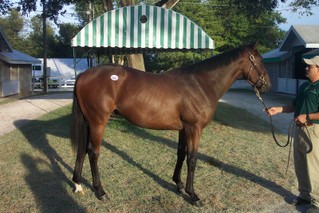 Perhaps
the two most significant factors to a horse’s success
(aside from its determination or “will”
to win) are its pedigree and how it is constructed. Perhaps
the two most significant factors to a horse’s success
(aside from its determination or “will”
to win) are its pedigree and how it is constructed.
A horse’s
pedigree is its bloodline or genealogy—mother (i.e., the dam)
and father (i.e., the sire), as well as all of its grand-dams,
grand-sires, brothers, and sisters.
Conformation refers to a
horse’s physical makeup (head to toe, both sides, front,
and back). How its legs are formed and body has
developed.
A
third consideration is its overall "look." Does the horse have an
intelligent head; racey appearance; and commanding presence?
Pedigree
When a horse is in a
stretch dual, you want it to be able to call on
the best traits of its ancestors to help it prevail. When analyzing a
horse’s pedigree, I believe its physical attributes come from
the sire, and its mind and will to win come from the dam.
That’s just my opinion; but it’s no secret that the
dam plays a significant role in a horse’s success. Many
astute buyers know this in some way, shape, or form. And you
don’t have to look any further than a catalog page in a sale
book for additional proof.
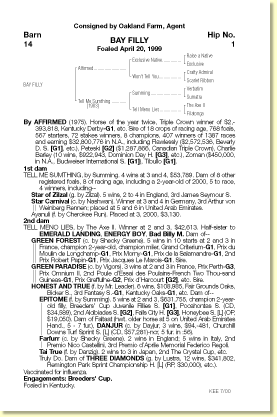 As
notable as the
billing is
for the sire of a yearling, he only receives a paragraph at the top of
the page that briefly lists his accomplishments and any notable success
of his offspring. The rest of the page is dedicated to the dam, grand
dam (or 2nd dam), and great-grand dam (3rd dam). Much is written about
her side of the family, and if the immediate dams are
“light” on wins, then the sales company will dig
deeper into the dam’s lineage to find winners to publish. As
notable as the
billing is
for the sire of a yearling, he only receives a paragraph at the top of
the page that briefly lists his accomplishments and any notable success
of his offspring. The rest of the page is dedicated to the dam, grand
dam (or 2nd dam), and great-grand dam (3rd dam). Much is written about
her side of the family, and if the immediate dams are
“light” on wins, then the sales company will dig
deeper into the dam’s lineage to find winners to publish.
This is all for good reason, of course. While pedigree
doesn’t guarantee racing success or failure, it does give
insight into the offspring of the parents. As such, if the momma has
produced six healthy foals, and all six were winners (of some
“type”), then that’s worth noting.
As I stated in my Keeneland update, wins are categorized by how notable
are the races that a horse has won (if any). Races are listed by an
internationally recognized Grade or Group: 1, 2, or 3 (Grade 1 is the
most
prestigious). After graded stakes, there are stakes and handicaps;
followed by listed, restricted, allowance, claiming, and maiden (for
non-winners) races.
Of course, to any Thoroughbred racehorse owner, a win is a win; but in
terms of evaluating the success of a stallion or a dam, the quality of
its wins (and those of its other offspring) makes a big difference in
terms of the marketability of the horse being sold. As such, the type
font of a horse’s name is a reflection of its success. Subtle
differences to the untrained eye don’t mean much; however,
the number of capital letters, bold-face type, and what I call its
“G force” designation actually means a lot. If a
horse’s name is in bold, that means it at least finished "in
the money" in a stakes race. If the same name is in bold and all caps,
that means it was a stakes winner. If the name is in bold, all caps,
and has a G1 by it, that means it won one of the most prestigious races
in the sport.
Conformation
How a horse’s hoof meets the turf is probably more important
than its pedigree. I say this because a horse can come from the best
pedigree in the world, but if it has a significant physical flaw
(particularly in the alignment of its legs and feet), then sooner than
later it’ll develop an ailment, or worse, breakdown
completely.
The horse relies on balance to keep its enormous 1,000+ pound body in
fluid, pain-free motion as it zooms around a race track at speeds up to
45 MPH. This balance is achieved with equal weight distribution between
its fore and hind legs. The composition of body mass to leg and ankle
ratio is really impressive—especially if you take a close
look at the bone structure in a horse’s leg (which is not
much bigger than a human’s).
As powerful as a horse is, its legs, knees, and ankles are very
fragile. Thus, it is important to look for a sound body all the way
around. There are many ways to do this, and none is superior to
another. Overall, you are evaluating the horse's symmetry front to
back; top (of the withers—the area between neck and back) to
bottom; facing forward and from behind.
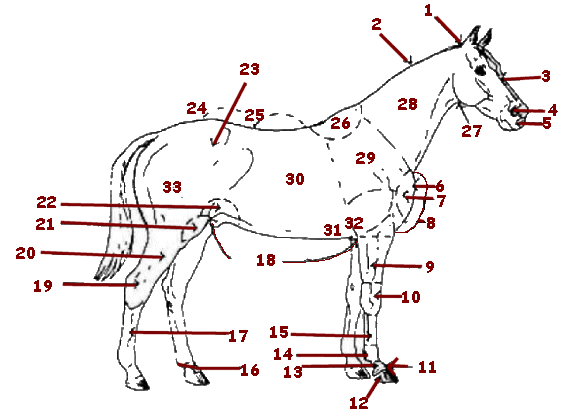 The head and neck are
important to
its airflow. The nostrils should be large; the eyes clear; the jaw wide
at the neck; and an internal examination of the throat (by way of a
professional Endoscopic examination) should show that the esophagus and
voice box are clear of obstruction. The head and neck are
important to
its airflow. The nostrils should be large; the eyes clear; the jaw wide
at the neck; and an internal examination of the throat (by way of a
professional Endoscopic examination) should show that the esophagus and
voice box are clear of obstruction.
The shoulder should be long and sloping (on both sides), and set a
45-degree angle to the ground to ensure the maximum length of stride.
The chest should be broad, and the heart-girth should be deep to allow
the lungs to expand and heart to pump freely. The back should be short
with a slight dip, and the loin (the area between the back and
hindquarters) muscular.
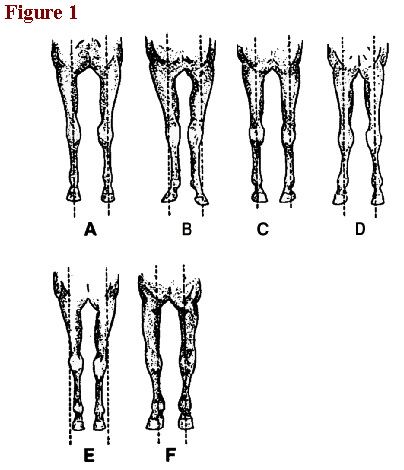
When looking at the
horse from
the front, and you draw that line through each leg from the chest to
the hoof, the leg should be symmetrical on both sides of the line. The
imaginary line through both legs should be parallel and equidistant to
each other from the top to the bottom and not narrow in spacing - See
"Figure 1A" below.
The toes should be pointing
forward and look perfectly rounded like a dome. A good farrier can mask
hoof maladies and direction by the way the shoes are fitted, so you
have to take a close look at the hoof from the front, side, and
underneath.
When viewing the hoof from the side, the 45 degree slope
should be flat from the tip of the toe to the ankle (or pastern).
The
pastern is the shock absorber for the horse’s leg, and if the
angle of the hoof is jacked up above the 45 or rides lower than the 45,
then this will affect the horse’s cushion and increase stress
on the tendons and bones. The bottom of the hoof will tell you how the
horse is running and what type of corrections the farm has asked the
farrier to make. The bulb of the heal should be wide and free of wear,
and the soft “v-like” tissue (or frog) should look
healthy.
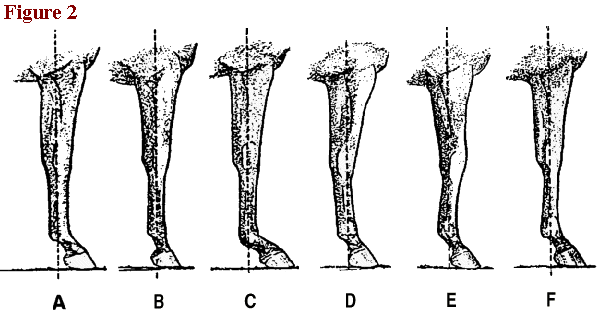
The front legs
support 60 percent
of the horse’s weight. The ideal conformation of both front
legs (when viewed from the front and side) should be such that you can
draw an imaginary line through the center of upper leg (forearm), knee,
and lower leg (cannon bone) to the back of the hoof - see "Figure 2A"
below. The forearm should be wide, muscular, and have enough room to
place your fist where the leg meets the chest (same area as a
person’s arm pit). The knees should be large, aligned
straight, and flat. The tendons that surround the cannon bone should be
parallel from top to bottom. And the angle of the hoof should be the
same 45 degrees as the shoulder.
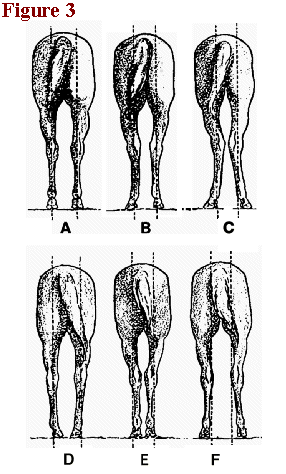
The hindquarters (or
croup)
produces the horse’s power. The croup should be muscular and
well-rounded; and wide, flat, and symmetrical when viewed from behind -
see "Figure 3A" below. The muscles should be long, slightly rounded,
and well-developed. The croup should be rounded—not flat,
short, stocky, or sloped. The thigh (or gaskin) should also be at a 45
degree angle. Unlike the foreleg, you should be able to draw straight
line from the rump to the hock (elbow) along the back of the leg
(cannon) to the back of the fetlock (lower elbow). The length, width,
and alignment of the hindquarters are important to speed and power
generated respectively. Some slight imperfections in the hindquarters
are allowable—just not extremes which will upset the
horse’s balance.
Last, but not least, the true test of a horse’s conformation
is to see how it walks. Handlers are trained to present the horse in
the best position when standing still. However, when the horse is in
motion, you can see if it actually takes clean steps (meaning: the
right front is on the same line as the right back, and same for the
left). You want to see if the right interferes with the left, paddles,
wings out, or clip heals (inside or front to back). Watch the horse
from the front, side, and back. It’s said the best way to
watch a horse walk is from behind—just don’t get
too close!
Famous
Comment on the Same
We can talk about pedigree and conformation all day until
we’re blue in the face; but the late Hall of Fame Jockey,
Bill Shoemaker, said it best: “If the big S.O.B. can just run
a little bit, we ought to be all right.”
Horse
Awareness and Safety
Horses are “flight” animals. If they get scared,
then they run, kick, stand on their hind legs, or any combination of
these things. Some horses are "high strung" or even mean—for
whatever
reason—and they will bite and stomp just to prove their
dominance. As such, when you are near horses, be respectful of your
shared surroundings, and give yourself plenty of room to negotiate.
Don’t make sudden moves, or run up to a horse. Be mindful of
what a horse might do when you are standing next to one. Basically, a
horse can only see what’s ahead and slightly off to the side,
but it can hear (very well) all the way around.
If you plan to get close to a horse during your inspection, you should
probably ask the handler for permission and a little insight about the
horse’s demeanor. If it’s okay get closer, start
from the front; and as you move toward the horse’s hind
quarters, keep your hand on its shoulder, back, and rump as you walk
around. This will give the horse a sense of your presence. Never stand
directly behind a horse when close, and be attentive to keep your feet
back to avoid being stepped on or kicked when off to the side.
Horses are adorable; but if you are not familiar with
one’s behavior, keep the peppermints your
pocket and leave the hay in the feed basket. If you are uncomfortable
being around horses, then it is best not to be in close company because
they can sense tension and fear, and that makes them nervous too.
Mojo
Makes It Easy
Mojo Thoroughbred Holdings, LLC (which conducts its horse
racing operations as Mojo Racing Partners) was founded in 2006 to give
people affordable and fun opportunities to
participate in the exciting sport of Thoroughbred racing.
If
you have any additional questions about participating in a Mojo Group,
please contact: Fred
Taylor, Jr. - Founder, CEM, and
President - Mojo Thoroughbred Holdings, LLC.
|
|
|
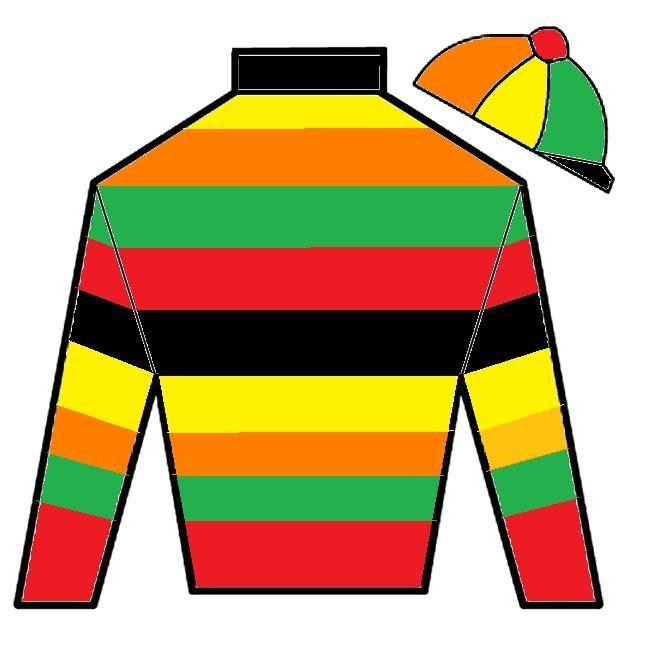

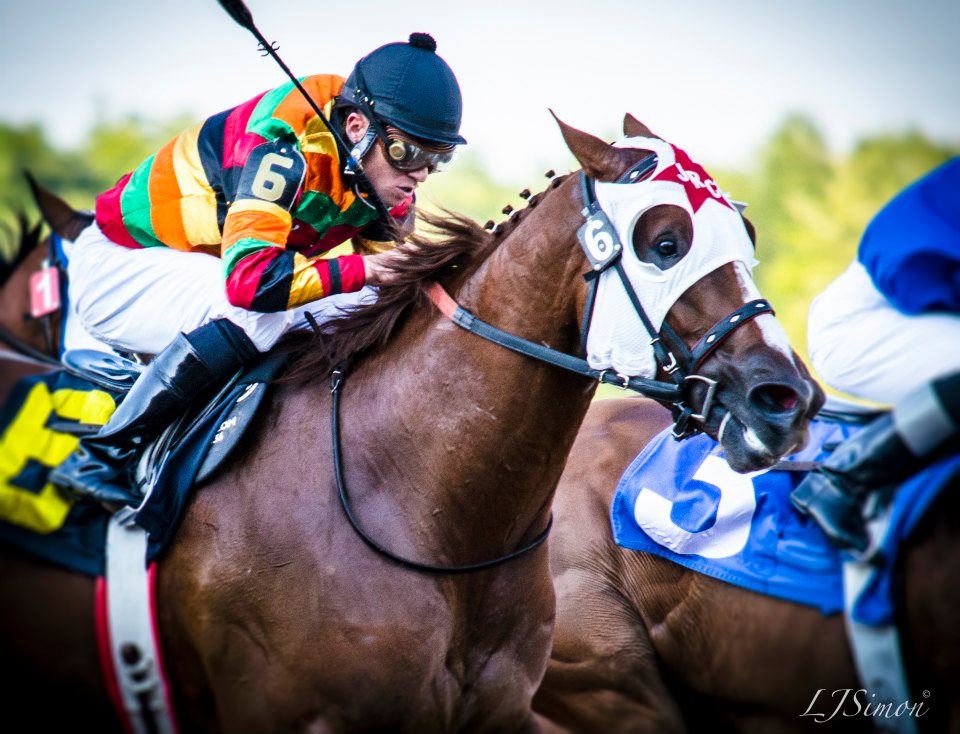








 Perhaps
the two most significant factors to a horse’s success
(aside from its determination or “will”
to win) are its pedigree and how it is constructed.
Perhaps
the two most significant factors to a horse’s success
(aside from its determination or “will”
to win) are its pedigree and how it is constructed.